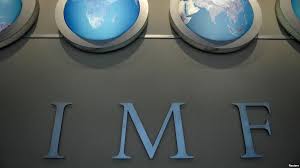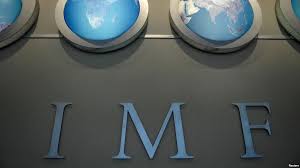
Following new figures from Beijing that showed that the Chinese economy grew at its slowest rate in a quarter of a century in 2015, the International Monetary Fund cut its global growth forecasts for the third time in less than a year on Tuesday.
A sharp slowdown in China trade and weak commodity prices that are hammering Brazil and other emerging markets were cited by IMF as reasons to back its forecast.
The global economy would be down by .02 percent from the last forecast in October, the IMF predicted that the world economy would grow at 3.4 percent in 2016 and 3.6 percent in 2017. Short-term demand should be bolstered in some way by policy makers, IMF said.
Representing a sharp slowdown from 2015, the IMF maintained its previous China growth forecasts of 6.3 percent in 2016 and 6.0 percent in 2017.
In a year in which the world's second biggest economy endured huge capital outflows, a slide in the currency and a summer stock market crash, China reported that growth for 2015 hit 6.9 percent.
As investors anticipated greater efforts by Beijing to spur growth after the China data was released, shares in Europe and Asia rose and the dollar gained.
While weaker-than-expected Chinese imports and exports were weighing heavily on other emerging markets and commodity exporters, a steeper slowing of demand in China remained a risk to global growth, IMF noted.
"We don't see a big change in the fundamentals in China compared to what we saw six months ago, but the markets are certainly very spooked by small events there that they find hard to interpret," IMF economic counsellor Maurice Obstfeld said in a videotaped statement.
The IMF however believes that the global financial markets seemed to be overreacting to falling oil prices and the risk of a sharp downturn in China. It was critical that China is clear about its overall economic strategy, including its currency, Obstfeld also said.
"It's not a stretch to suggest that (markets) may be reacting very strongly to rather small bits of evidence in an environment of volatility and risk aversion," Obstfeld said at a news conference.
"The oil price puts stresses on oil exporters ... but there is a silver lining for consumers worldwide, so it's not an unmitigated negative," Obstfeld added.
The probability of a global recession this year was as high as 20 percent in a worst case scenario, U.S. investment bank Morgan Stanley said.
The main risks that are faced by the world economy in 2016 are the soft consumer demand in the United States and Japan and weakness in emerging markets due to worries over plunging oil and commodity prices and capital outflows from China.
A growth below the roughly 2.5 percent needed for the world economy to keep up with an expanding population is loosely defined as a global recession.
As dollar strength weighs on manufacturing and lower oil prices curtail energy investment, the outlook for an acceleration of U.S. output was dimming, the IMF said.
(Source:www.reuters.com)
A sharp slowdown in China trade and weak commodity prices that are hammering Brazil and other emerging markets were cited by IMF as reasons to back its forecast.
The global economy would be down by .02 percent from the last forecast in October, the IMF predicted that the world economy would grow at 3.4 percent in 2016 and 3.6 percent in 2017. Short-term demand should be bolstered in some way by policy makers, IMF said.
Representing a sharp slowdown from 2015, the IMF maintained its previous China growth forecasts of 6.3 percent in 2016 and 6.0 percent in 2017.
In a year in which the world's second biggest economy endured huge capital outflows, a slide in the currency and a summer stock market crash, China reported that growth for 2015 hit 6.9 percent.
As investors anticipated greater efforts by Beijing to spur growth after the China data was released, shares in Europe and Asia rose and the dollar gained.
While weaker-than-expected Chinese imports and exports were weighing heavily on other emerging markets and commodity exporters, a steeper slowing of demand in China remained a risk to global growth, IMF noted.
"We don't see a big change in the fundamentals in China compared to what we saw six months ago, but the markets are certainly very spooked by small events there that they find hard to interpret," IMF economic counsellor Maurice Obstfeld said in a videotaped statement.
The IMF however believes that the global financial markets seemed to be overreacting to falling oil prices and the risk of a sharp downturn in China. It was critical that China is clear about its overall economic strategy, including its currency, Obstfeld also said.
"It's not a stretch to suggest that (markets) may be reacting very strongly to rather small bits of evidence in an environment of volatility and risk aversion," Obstfeld said at a news conference.
"The oil price puts stresses on oil exporters ... but there is a silver lining for consumers worldwide, so it's not an unmitigated negative," Obstfeld added.
The probability of a global recession this year was as high as 20 percent in a worst case scenario, U.S. investment bank Morgan Stanley said.
The main risks that are faced by the world economy in 2016 are the soft consumer demand in the United States and Japan and weakness in emerging markets due to worries over plunging oil and commodity prices and capital outflows from China.
A growth below the roughly 2.5 percent needed for the world economy to keep up with an expanding population is loosely defined as a global recession.
As dollar strength weighs on manufacturing and lower oil prices curtail energy investment, the outlook for an acceleration of U.S. output was dimming, the IMF said.
(Source:www.reuters.com)





